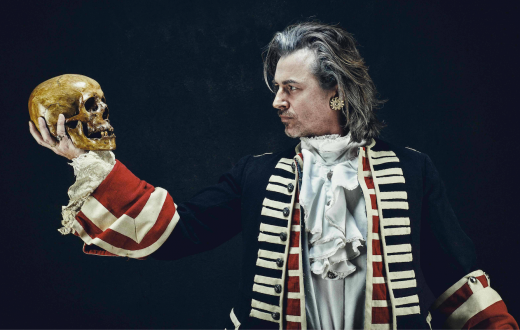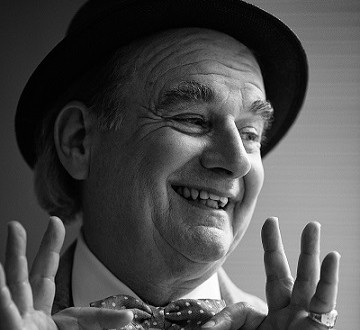In cinema and theater, there exists a fascinating field known as underwater performance acting. This form of art requires actors to immerse themselves, quite literally, to bring characters to life in an aquatic setting. Whether it’s the profound underwater scenes in movies like The Shape of Water or specialized underwater theaters offering a unique viewing experience, the world beneath the waves demands a particular set of skills from its performers. From mastering breathing techniques to conveying raw emotion below the surface, underwater performance acting is as demanding as it is enchanting (think Mermaids!).
Training and Mastery
An actor aiming to dive into this specialized domain must undergo rigorous training. Unlike a conventional performance, where the primary concern might be dialogue delivery or emotive expressions, underwater acting incorporates a host of other challenges.
Breathing Techniques: Before any emotion or movement can be conveyed, actors must learn how to hold their breath for extended periods without appearing strained. This often involves training with professional free divers or underwater stunt coordinators. Techniques like hyperventilation, which involves taking a series of deep breaths before submerging, can help actors saturate their lungs with oxygen, allowing them to stay underwater longer.
Swimming Proficiency: Being an adept swimmer is a given. The actor must navigate the watery landscape effortlessly, moving gracefully yet purposefully. Swimming techniques are modified to suit the requirements of the scene, ensuring the actor’s movements are fluid and harmonious with the surroundings.
Emotion Underwater: Conveying emotion is uniquely challenging when submerged. The usual nuances of facial expression can be distorted by water. Hence, actors might have to exaggerate certain expressions or rely more on body language. Additionally, the absence of dialogue requires actors to communicate emotion more through physicality than words.
Physical Demands: The buoyancy of water changes the way an actor’s body responds. Movements are slower, and even a simple gesture requires more energy. The resistance water offers means that actors need to develop strong muscular endurance. Regular strength training, combined with specialized underwater movement exercises, ensures that actors can perform lengthy or complex scenes without fatigue.
Something else to consider — the cold temperature of water (unless artificially warmed) can be a challenge. Prolonged exposure can lead to hypothermia. Actors are often required to acclimatize to colder temperatures to avoid shock during their performances.
Safety First: Safety is paramount in underwater performance acting. Every production employing such scenes ensures a team of safety divers is always on standby. These divers are equipped with oxygen tanks and are trained to respond to emergencies, ensuring that actors can be brought to the surface quickly if needed.
Furthermore, the clarity of communication between the director and the submerged actor is vital. Hand signals are often developed and rehearsed extensively before the actual shoot or performance. This non-verbal communication ensures that actors know when to surface for air or if there are any changes in the scene.
Artistic Depth of Underwater Performances: Despite the challenges, the artistic allure of underwater scenes is undeniable. The very essence of water adds an ethereal quality, transforming a scene into a dreamscape. The way light refracts, the dance of bubbles, and the fluidity of movement can turn a simple scene into a visual masterpiece.
Water can symbolize a myriad of emotions and themes, from rebirth to suppression, making it a powerful tool for storytelling. When actors embrace the medium, they unlock a realm of unparalleled artistic potential.
Examples
The allure of underwater settings has never failed to captivate viewers, as it brings forth a sense of wonder and intrigue. Explore the artistry behind performances beneath the waves with these examples from film, TV, and theater.
Titanic: James Cameron’s monumental film Titanic intertwines an enchanting tale of love with a catastrophic disaster. Notably, this cinematic masterpiece showcases several breathtaking underwater scenes that vividly depict the sinking of the ship. One unforgettable moment takes place in the grand staircase room as Rose and Jack find themselves submerged in water amidst chaos. This particular scene serves as a testament to the immense challenges faced by actors performing within an expansive flooded set. To bring these remarkable sequences to life, a custom-built tank was employed for shooting underwater scenes, demanding actors to master breath control techniques and confront physical hurdles such as water pressure variations and temperature fluctuations.
Game of Thrones: Season 6. This episode showcases an important underwater scene. The Iron Islands, where the scene is set, has a deep-seated cultural connection to the sea. The scenes on the rickety bridge during a storm, combined with the peril of water below, highlight the element’s inherent danger and the challenges faced while filming in such conditions.
Aquaman: Plunging viewers into the mesmerizing realm of Atlantis, Aquaman is a visual spectacle helmed by James Wan. With a significant portion of the movie set underwater, audiences are treated to a breathtaking fusion of state-of-the-art CGI and practical underwater filming methods. The dedicated cast, led by Jason Momoa as Aquaman, braved countless scenes submerged in water tanks, relying on specialized rigs and harnesses to masterfully capture the ethereal sensation of floating beneath the surface.
Stranger Things: The Battle of Starcourt. In the climax of the third season of this popular Netflix series, Eleven and her friends face off against the Mind Flayer at the Starcourt Mall. At one point, Billy, played by Dacre Montgomery, has a flashback to a memory of being at the beach with his mother, which has significant underwater elements. This emotional underwater sequence is instrumental in the climax of the episode.
Harry Potter and the Goblet of Fire: The second challenge of the Triwizard Tournament demanded that Harry and his fellow champions embark on a daring mission to rescue their friends from the perilous depths of the Black Lake. To bring this intense underwater sequence to life, actors like Daniel Radcliffe dedicated themselves to extensive training in order to master the necessary aquatic skills. Through a combination of exceptional acting, awe-inspiring special effects, and fearless stunt doubles, this scene was crafted with precision and artistry to achieve its desired visual impact.
Fuerza Bruta: Look Up: Fuerza Bruta is a postmodern theater show known for its interactive experiences. One of the most memorable segments involves performers dancing and sliding on a transparent mylar tarp suspended above the audience, filled with water. It creates the illusion of people dancing on the surface of a swimming pool, viewed from below. This spectacle, while not entirely underwater, merges the realms of water and performance, demanding unique choreography and skill from its performers.
Underwater performance acting is not for the faint of heart. It demands physical prowess, emotional depth, and a deep-seated respect for the water’s power. But when done right, it offers a transcendent viewing experience, merging the best of human emotive capabilities with the beauty of the underwater world. It stands as a testament to the lengths artists go to, pushing boundaries and delving into the very depths, all for the love of the craft.







